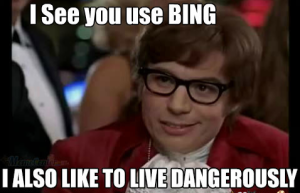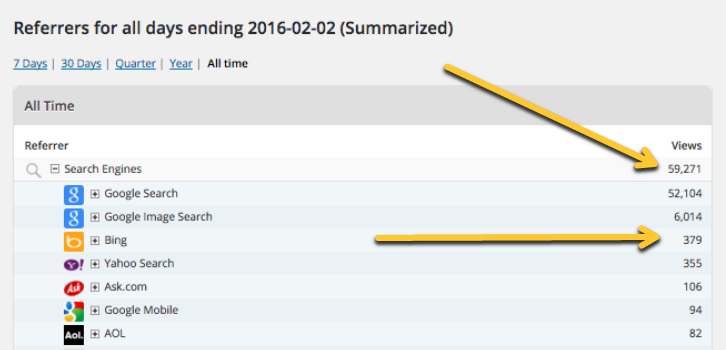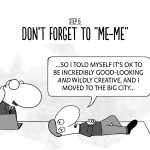Microsoft’s Bing and Your Advertising Agency
 I just took a look at my WordPress referral stats. I was discussing where my referrals come from with the 4A’s ex-Executive VP Michael Donahue who I just interviewed about the world of storytelling agencies. I’ll let you know when I get that up as a guest post on a major advertising news site. By the way, I love guest posting. I also love looking at MY stats.
I just took a look at my WordPress referral stats. I was discussing where my referrals come from with the 4A’s ex-Executive VP Michael Donahue who I just interviewed about the world of storytelling agencies. I’ll let you know when I get that up as a guest post on a major advertising news site. By the way, I love guest posting. I also love looking at MY stats.
The stats showed something that I find CRAZY! Back to that in a sec.
Help Bing, Please.
This post is about relevance. I urge all of my agency clients to make sure that when they contact a prospective agency client that they are very clear about how they can help them. I mean help them with some uber smartness that you think will impact an important business issue or opportunity. Your communications should be about how you can help them. Not a random liturgy of how wonderful you are.
Bing Needs Your Help.
What you can easily see from my WordPress chart is that Google rocks and Bing, um, sucks. What could you do with this information?
Well, I’d think about going to Bing and giving them a solution. It won’t be a competitive message, hard to compete with Google. But it could be a Bing-only experience that you won’t get anywhere else. Example? Remember the first time you saw The Wilderness Downtown (which for some of you might be today.) From Chrome Experiments…
Choreographed windows, interactive flocking, custom rendered maps, real-time compositing, procedural drawing, 3D canvas rendering… this Chrome Experiment has them all. “The Wilderness Downtown” is an interactive interpretation of Arcade Fire’s song “We Used To Wait” and was built entirely with the latest open web technologies, including HTML5 video, audio, and canvas.
Note: Bing spent millions a few years ago trying to get you excited about their search platform. Unfortunately, it was way wasted bucks. As you can see.
https://www.youtube.com/watch?v=t3u7pfDa5yc
Really, WTF were they thinking? JWT made this magic.
If you think that this Bing project is worth the effort, then take a read of the PCWorld article. It can’t be surprising that there is more info out there that you can use to craft your pitch. You could even use my website (or yours) as the start of a discussion.








